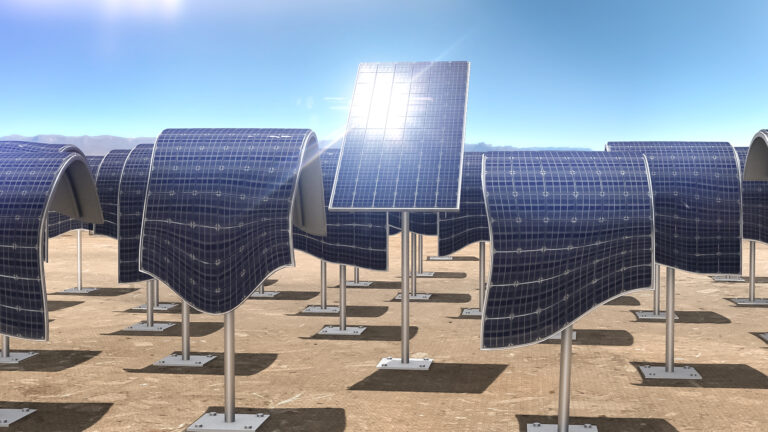Material Science and Engineering
How tiny imperfections impede performance
Understanding the impact of surface defects underpins improved efficiency of hybrid organic/inorganic solar cells.


Hybrid solar cells have applications in flexible electronics and portable devices.
© Armen Gharibyan / Alamy stock photo.
Hybrid solar cells utilize an interface comprising layers of organic and inorganic materials to convert sunlight into electricity. Zinc oxide (ZnO) is a popular choice for the inorganic material because it is cheap, non-toxic and readily available. However, the conversion efficiency of hybrid solar cells using ZnO/organic-donor bulk heterojunctions is currently very low—only two percent when ZnO is blended into an organic donor material. On the other hand, a decent 6.1 percent efficiency has been reached when ZnO is used as a layer sandwiched between an electrode and a layer of polymer or small-molecule acceptors.
Jean-Luc Bredas from the KAUST Solar & Photovoltaics Engineering Research Center and colleague Hong Li suspect that intrinsic defects in ZnO are a key factor in the poor performance1. By comparing the differences in electronic properties between various hybrid materials, they concluded that zinc vacancies reduce conversion efficiency by hindering the charge separation process at the interface between the organic and inorganic materials.
It is well known that ZnO adopts different roles in bulk heterojunctions depending on the type of organic material and architecture used. When blended with polymer or small-molecular donors such as sexithienyl, ZnO assumes the role of an electron acceptor: it takes up or “accepts” electrons and leaves positively charged holes behind in a sexithienyl layer.
When sandwiched between an electrode and a fullerene acceptor layer, ZnO helps transfer the electrons from the fullerene layer to the electrode. These processes enable the efficient conversion of sunlight into electricity.
The researchers used computer simulations to examine how zinc vacancies at the surface of zinc oxide impact these two processes. For the ZnO/sexithienyl bulk heterojunction, zinc vacancies at the ZnO surface can hinder local charge transfer at the ZnO/sexithienyl interface and can also prevent efficient charge separation due to strong Coulomb interactions. However, for the ZnO/fullerene interface, such vacancies don’t significantly impact the charge transfer process.
For these reasons, the ZnO/organic heterojunctions developed so far are inefficient. In comparison, however, zinc vacancies have significantly higher negative impact on ZnO/sexithienyl than on ZnO/fullerene interfaces. The results have important implications for the development of hybrid solar cells, which have applications in flexible electronics and portable devices.
“What we learned from our investigations is to what extent defects at the surface of conducting metal oxides like ZnO determine the overall electronic properties and ultimately the device efficiencies,” noted Bredas. He suggested the findings indicate possible ways to improve solar cell efficiency through surface modifications.
References
-
Li, H. & Bredas, J. Comparison of the impact of zinc vacancies on charge separation and charge transfer at ZnO/sexithienyl and ZnO/fullerene interfaces. Advanced Materials 28, 3928–3936 (2016).| article
You might also like

Electrical Engineering
A shade closer to more efficient organic photovoltaics

Material Science and Engineering
A tandem approach for better solar cells

Material Science and Engineering
High-temperature electrical memories for brain-inspired computation

Environmental Science and Engineering
A green polymer film offers climate-friendly cooling

Material Science and Engineering
Efficient coupling adds an extra level to photovoltaics

Electrical Engineering
Best thermal stability and efficiency in organic solar cells

Electrical Engineering
Seeking stability to support sustainable outdoor solar cells

Chemical Engineering



